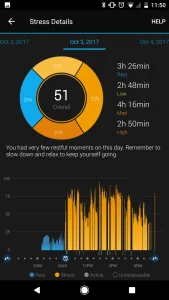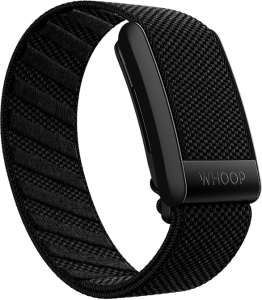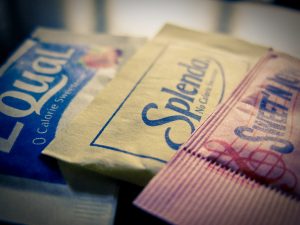-
Welcome!
In pampy's post April25b;
🍎 Easter calories IN, calories OUT balance
🍎 Are tech wellness metrics desensitising our innate sense of health & over-training?
🍎 Can you still skip? Here's why I hope you still skip!
🍎 Do sugar-replacement choices help weight management?
🍎 Win the morning, win the day - the THREE best kickstarting movements

-
Easter Numbers!
play up - turn up
It's around Easter time when many Australians have finally recovered from the year-end festivities. Their energy, weight, and routines are back on track. Then comes a 4-day mini-break—not long enough to completely unwind, but just long enough to throw your body back to mid-January.

Fortunately, our kids have outgrown the whole chocolate rabbit thing. However, the mini-break will likely involve alcohol, hot-cross buns, and, yes, a likely sneaky chocolate or two.
So here’s the deal: rather than being a goodie two shoes, I’m going to embrace my motto of “play up, turn up.” If I get up the next morning and get moving, I know my body will metabolize much of the energy from the Easter calories. Here are a few numbers fyi.
IN calories – a standard version.
OUT calories – (~) 70-80kg person at conversational pace/effort for 30 minutes.
Calories IN
Calories OUT
Beer (375ml)
155
Walk
140
Red Wine (Std)
125
Run
290
White Wine (Std)
120
Swim
170
Small Easter Egg
310
Cycling
260
Large Easter Egg
450
Rock Climbing
410
Caramel Easter Egg
560
Mowing the lawn
360
Easter Bun
420
Gardening
140
Chocolate Easter Bun
600
Couch
25
Play up - Turn up!
-
Are tech metrics desensitizing our
innate sense of well-being & overtraining?
For years now, I’ve worn wearables to track my state of wellness and fitness. I appreciate having data at my fingertips. As technology has improved, the near-instant feedback has helped me make informed decisions about my dietary choices, activity type and intensity, and, importantly, my optimal rest, including active recovery and sleep length.

Currently, I’m wearing a Garmin wellness watch, and I previously used an Oura ring for 12 months. Additionally, I closely follow my daughter's metrics, as she is a full-time athlete using a Whoop strap.
So, why do I focus on these metrics, and what’s the key advantage?
The main goal behind tracking wellness metrics is to prevent your health from declining into a risky state. Technology monitors lifestyle stressors, exercise intensity and duration, and sleep quality. If you fall below your healthy threshold, the metrics will advise you to rest, exercise lightly, or stay in bed.
Technology is sensitive to your sleeping state, body temperature, heart rate, heart rate variability, and what they call biorhythms. Using an algorithm, you are presented with data to help you make choices for that day.
Understanding your level of overtraining or stress is essential to avoiding burnout. For example, if my wellness ‘stress’ score reads low, but I train hard, rest poorly, and consume alcohol and ultra-processed foods, my chances of falling ill or getting injured are significantly higher.
I’ve analyzed this technology data for over a decade, and I have to say the feedback does not solely convince me. There have been days when I’ve felt amazing, yet the recommendation has been to take the day off from all exercises. Sometimes, it has me thinking, is this just datatainment?
I believe that good old body awareness is essential for assessing wellness status, at least for those who are honest with themselves.

I’ll use my daughter as an example. If she shows the following behaviour and symptoms, I know she is over-trained, over-stressed, and close to falling ill, getting injured, or playing poorly:
😟 A complete disinterest in communication with her coach, teammates, friends, and family.
😟 Scrolling - as in more than usual.
😟 She craves sugary snacks, as evidenced by the wrappers lying around, indicating she's too lazy to put them in the bin.
😟 A low interest in learning and sustained cognitive endurance.
😟 Leaving the kitchen in a mess.
😟 Irregular cycles.
😟 Complains of finding it hard to get to sleep.
😟 She reacted negatively towards teammates, especially when she clearly made a poor play.
This behaviour signals that she needs to take a step back
and reassess her input, output, and rest-put.
-
I hope you can 'still' skip!
I'd guess that 99% of people reading this have skipped at some point in their lives. Young boys skip down hallways chasing footy's, and girls enjoy double dutch skipping rope. Well, that used to be the case.
Whether we realise it or not, this simple action of skipping helps to enhance our gross motor skills. The fast-twitch motion of our feet propelling off the ground significantly strengthens our lower legs, improves power, and boosts coordination and balance.
Even in the brutal sport of boxing, athletes dedicate countless hours to practicing skipping (jump rope). There isn’t a single elite runner, regardless of distance, who doesn’t incorporate skipping (as in skipping, not jump rope) into their training regimen. For runners, skipping refines the fine motor skills needed for takeoff without the impact stress associated with running.
In short, skipping is a low-risk, high-reward supplementary activity. So, if you’re a runner or feel like your dancing days are behind you, I encourage you to 1) get up and see if you can still skip (not jump rope, just a simple skip), and 2) incorporate some skipping into your training routine each week. The action of skipping is as nature intended! It degreases the rusty body. And heck, you’re never too old!
All over the world high school girls
Take to the ropes and turn them slowStarts a beat and a loop
They skip and jump thru the hoopSkip they do's the double dutch
That's them dancing
-
Are industrialized sweeteners better
– for weight management?
I've been discussing for years the idea that refined dietary sugar is a key reason for the increase in body fat in the Western world. The repeated spikes in blood glucose and the resulting imbalance of insulin can often lead to storing that energy as body fat. Yes, genetics play a role, and if someone is metabolising blood glucose for immediate energy, such as during exercise, it’s true that they can avoid gaining unnecessary and inflammatory-causing weight.
If dietary sugars influence unwanted body fat, it makes sense to remove sugars from the diet and focus on proteins and healthy fats to satisfy appetite. While this approach would work, there's a catch: once exposed to regular sugary treats, the body typically craves more. I wouldn't say it's an addiction, but it certainly explains why it's difficult to eat just one Malteser or one flavoured Dorito.
So, if someone enjoys a sweet treat, isn't exercising regularly, and wants to avoid weight gain, it would make sense to opt for artificially sweetened foods. Theoretically, this could satisfy cravings (the desire for immediate pleasure) without triggering an insulin spike. What a brilliant idea!

Data shows that the spike in blood glucose—and consequently, the spike in insulin—is approximately 80% 'less' with artificial sweeteners compared to refined sugar products. A great example of this is the difference between fully loaded soft drinks and zero-sugar options. This sounds great, right?
Well, it may be better for most people, but there’s a catch. The data also indicates that while appetite and metabolism may be kept in check, if you indulge in a mid-afternoon pick-me-up with zero-sugar snacks, like chocolates, cake, soft drinks, fruit drinks, sweets, or energy drinks, you face a 90% chance of consuming more calories (even if they're somewhat healthy) at dinner. Additionally, there is an 80% chance of succumbing to a sugar craving after dinner. So, while the spike in insulin may be lower, the day's end total calorie intake can actually be higher.
Artificial sweeteners may negatively influence natural appetite in some individuals, affecting when to eat, how much to eat, and what type of food to choose. Therefore, for some people, relying on zero-sugar products might work against them in their struggle to maintain an ideal weight.
-
Win the morning,
Win the day!
I love this time of year in Oz!
Morning light, still enough heat to beam me up, Easter and the Masters.
I know if I cash in on the Autumn morning goodness, get up and rolling early, I'm a considerably better chance of enjoying a better day. I suspect it's the dopamine & serotonin mega-boost!
If you are 'not' currently in the flow of morning activities, I’ve discovered that these THREE actions (about 6-minutes worth), practiced as you roll out of bed, can significantly kickstart your 'mental' & physical day.
If you practice this waking routine every day for the year,
that’s a lifestyle (time) change of 0.0005%
